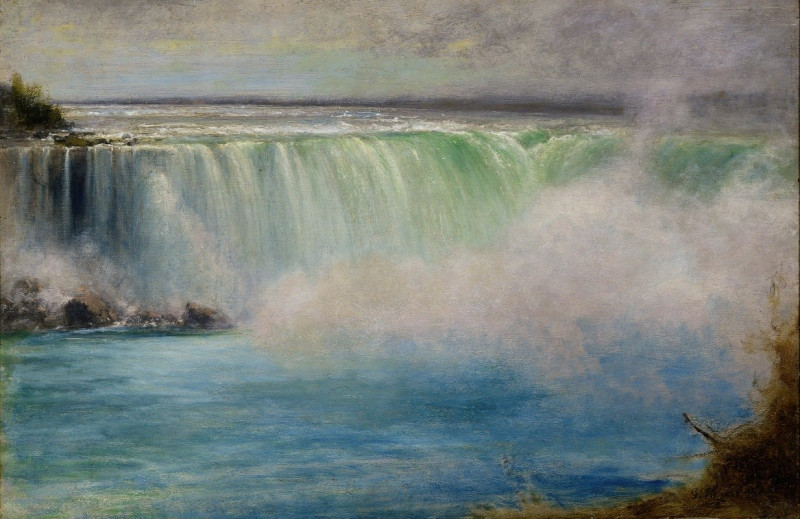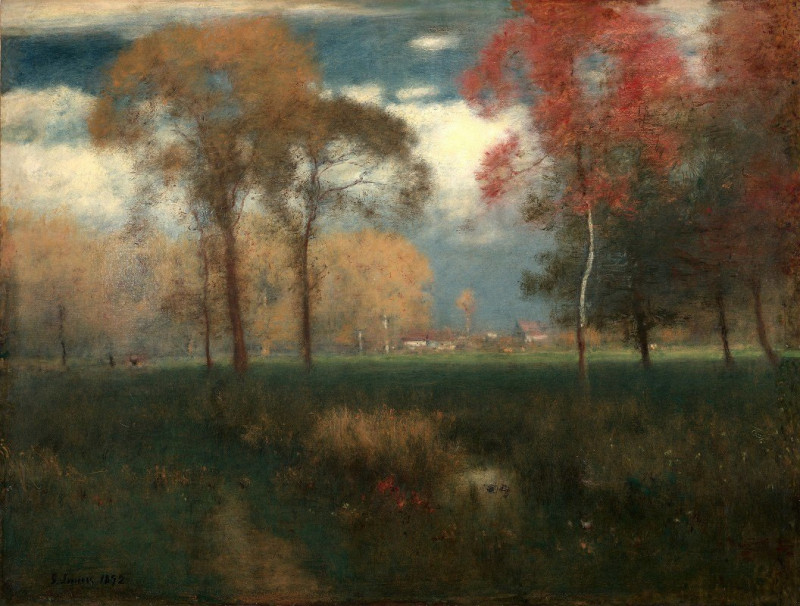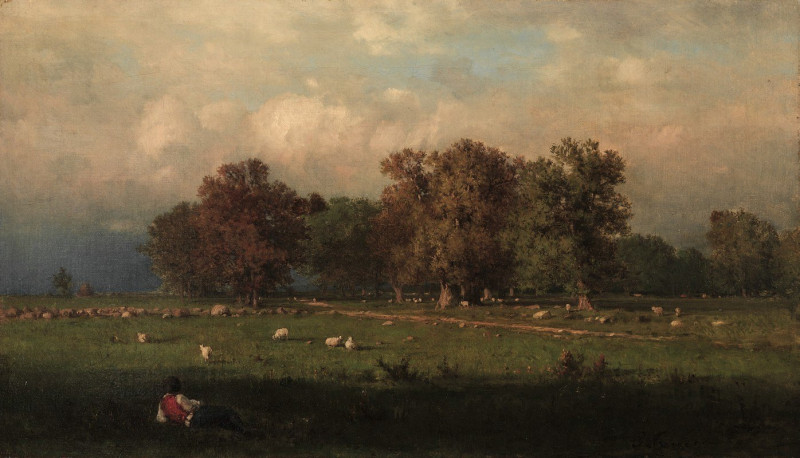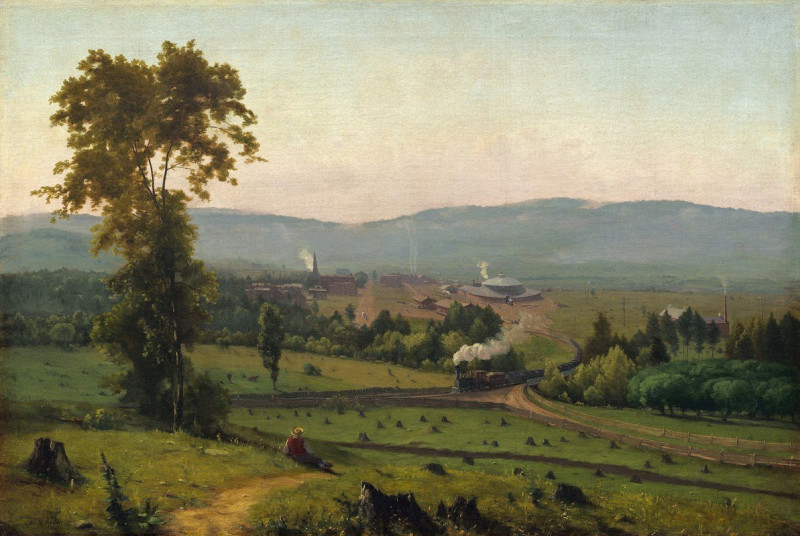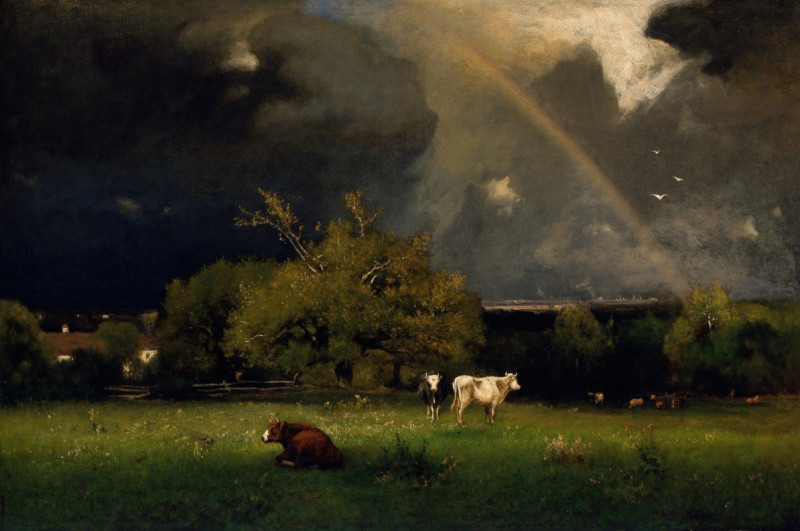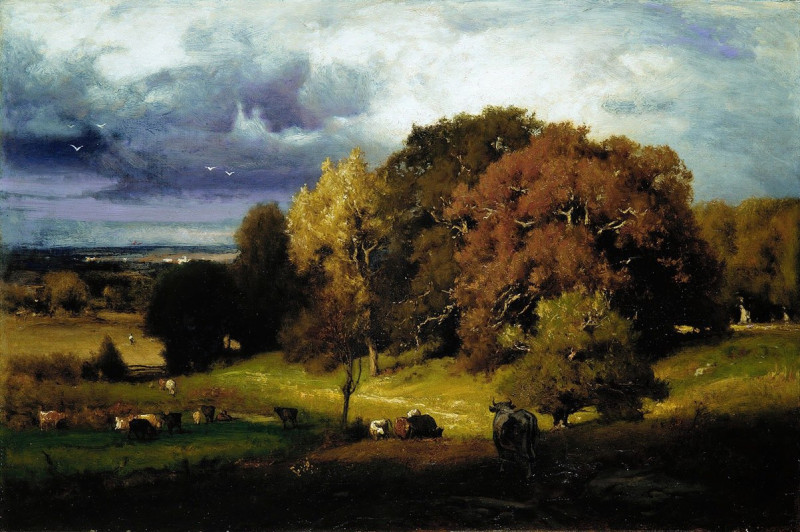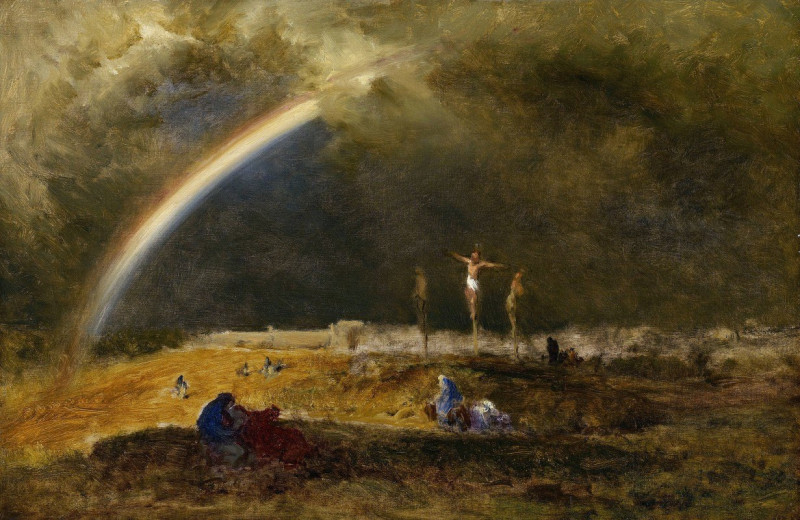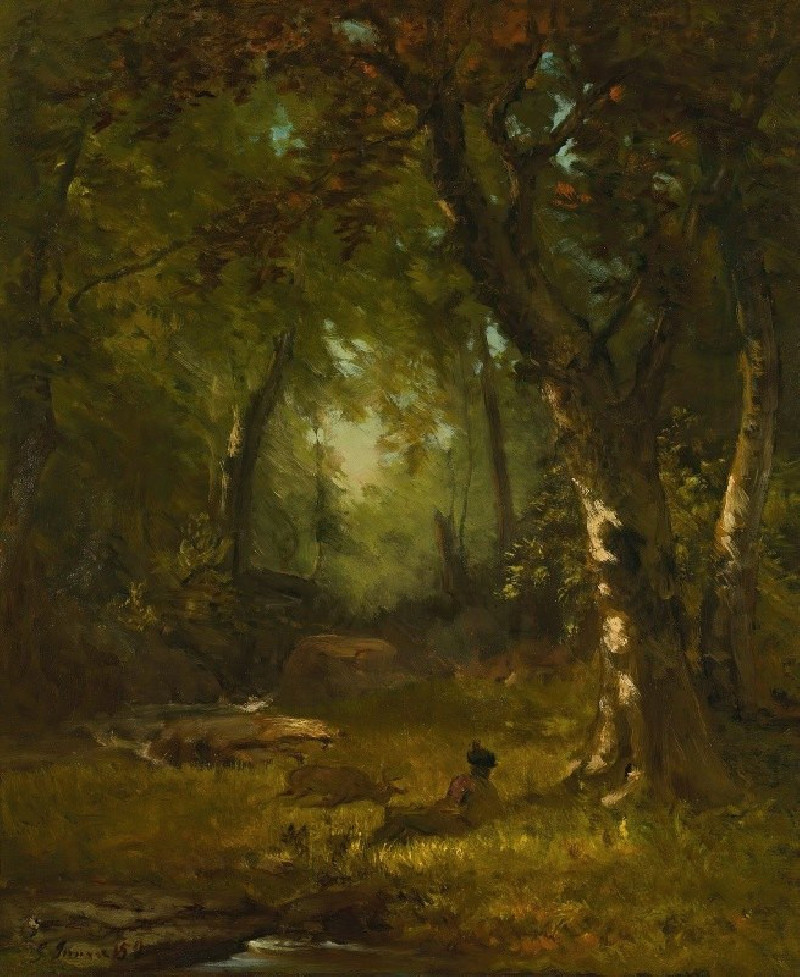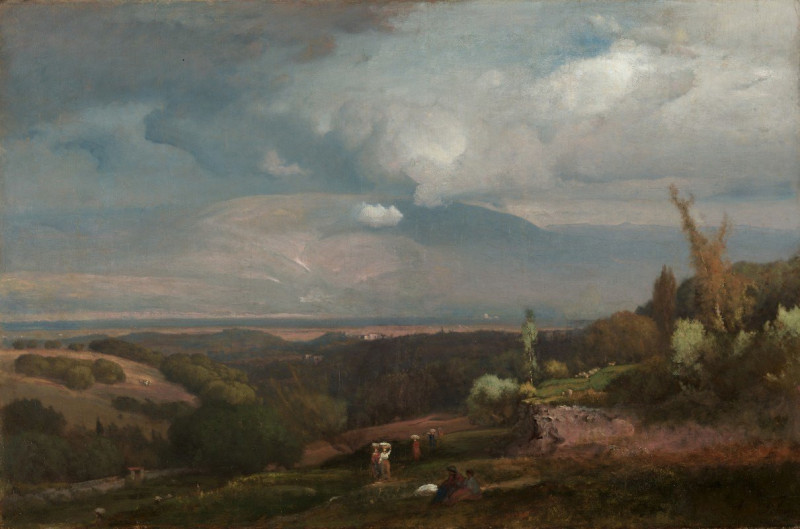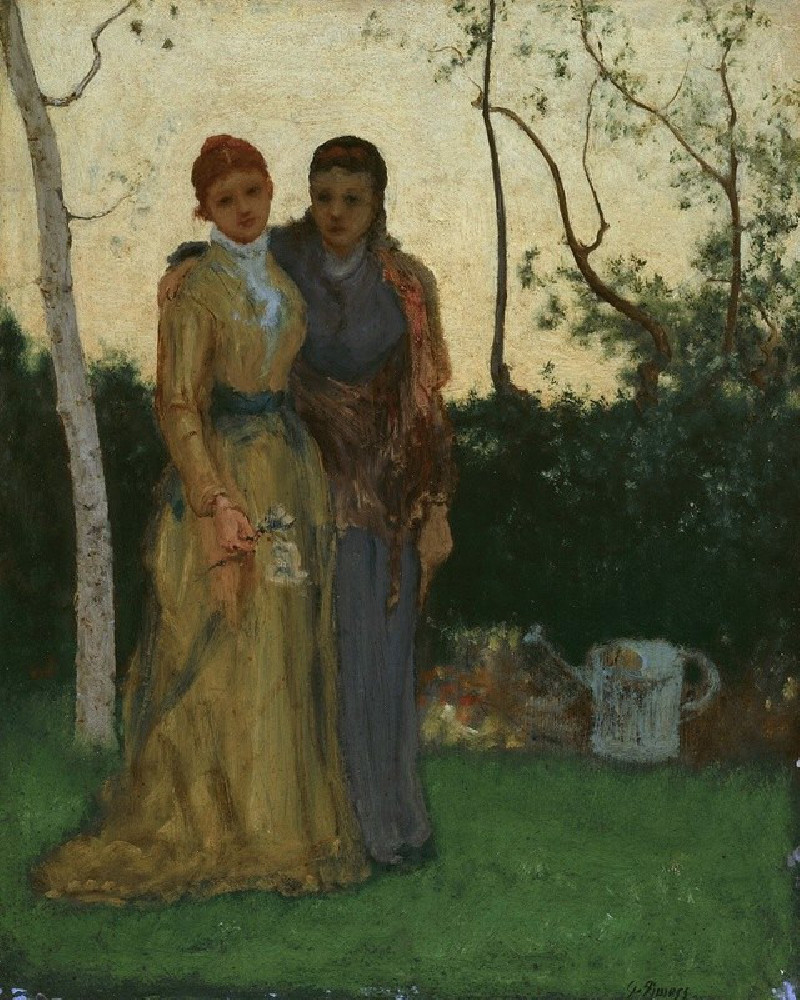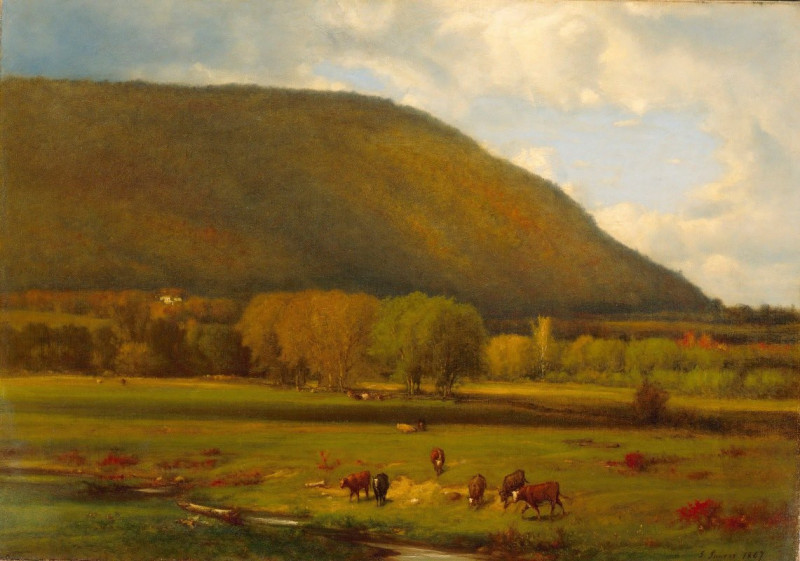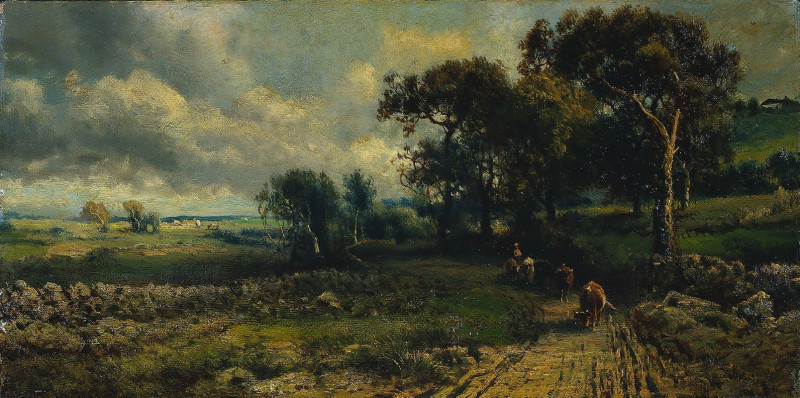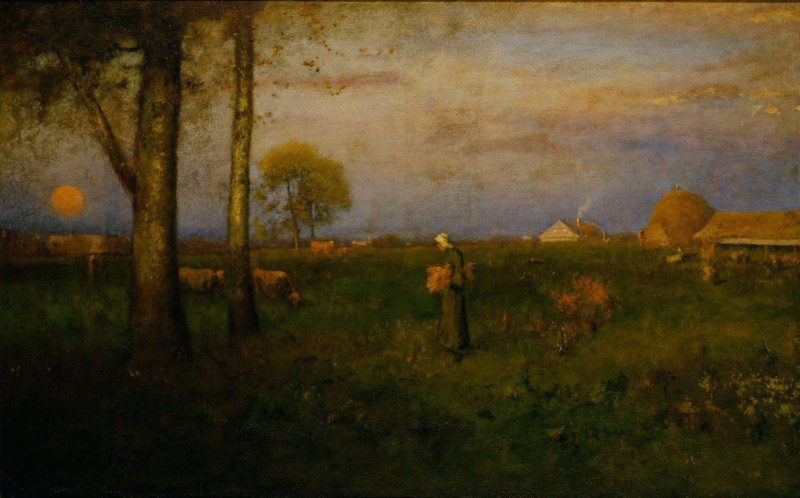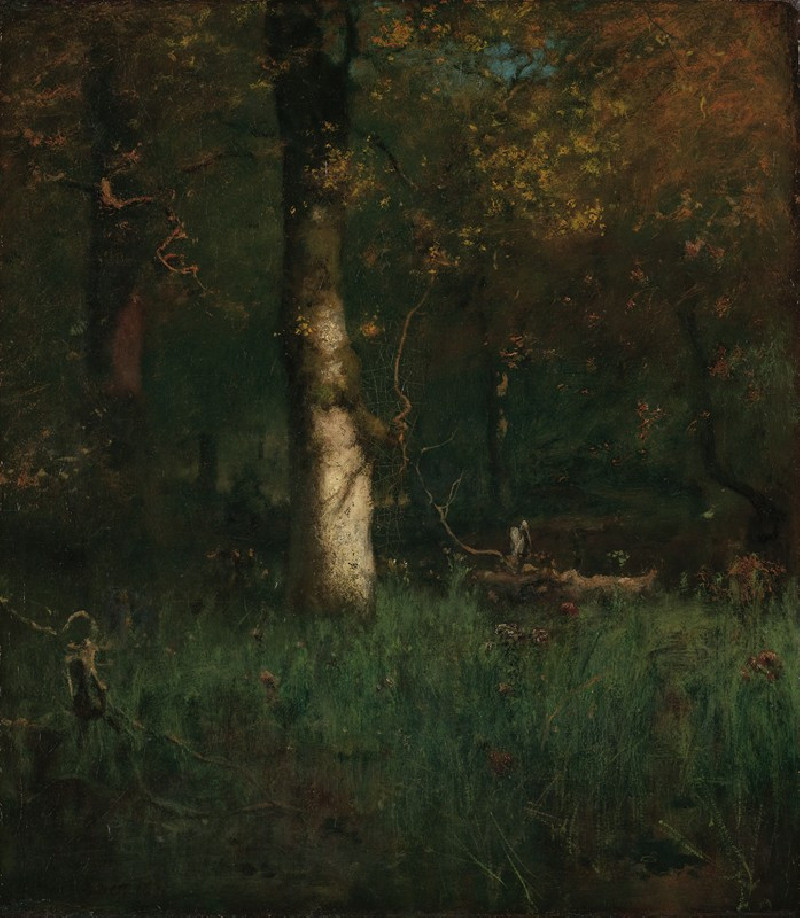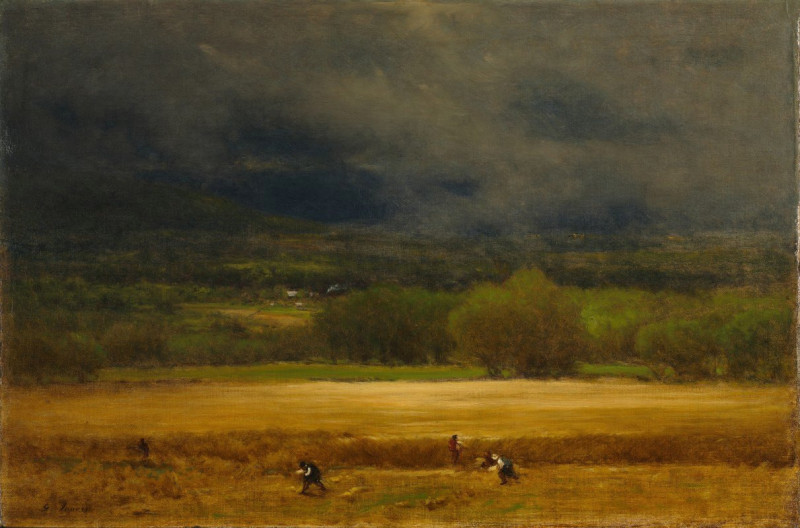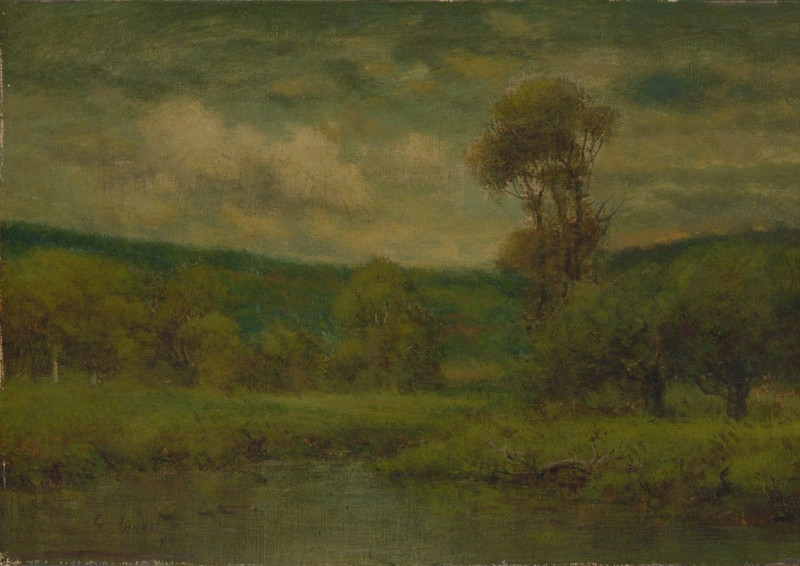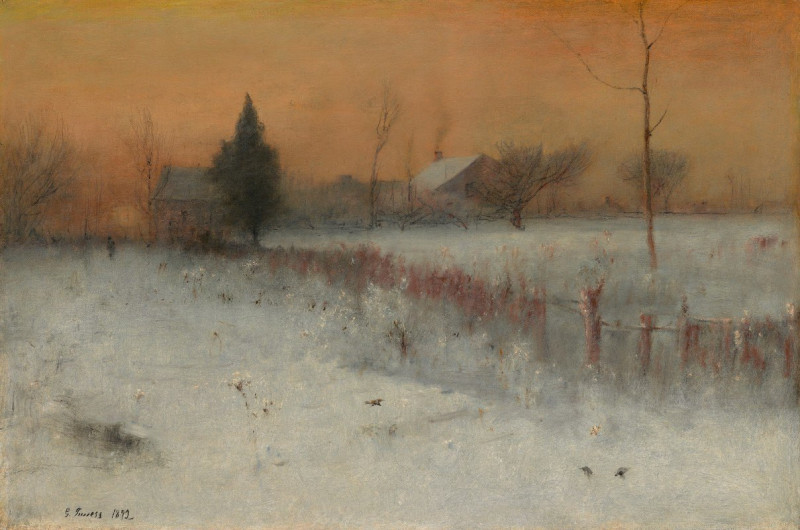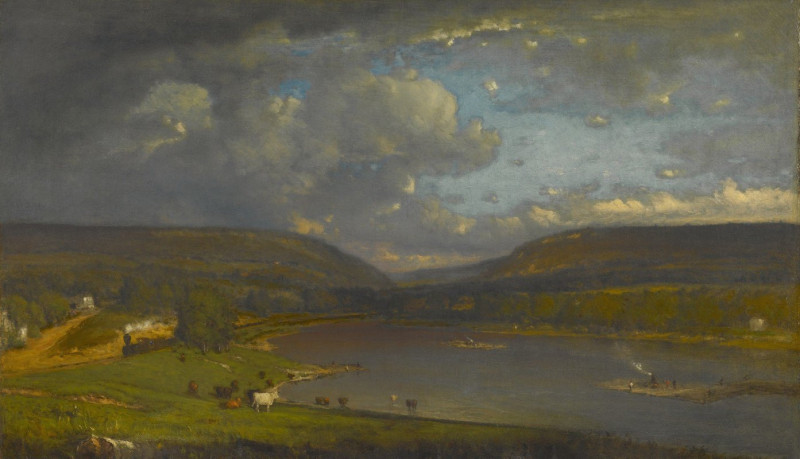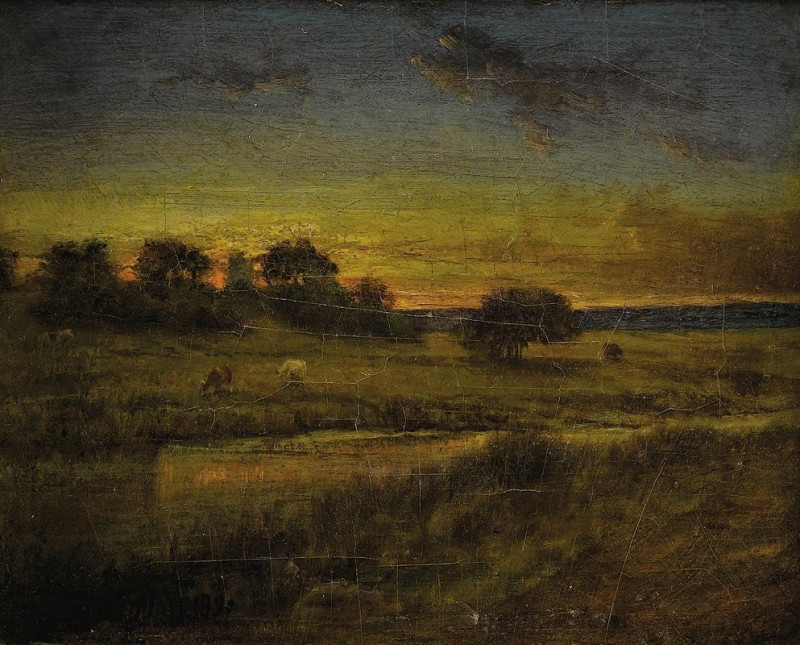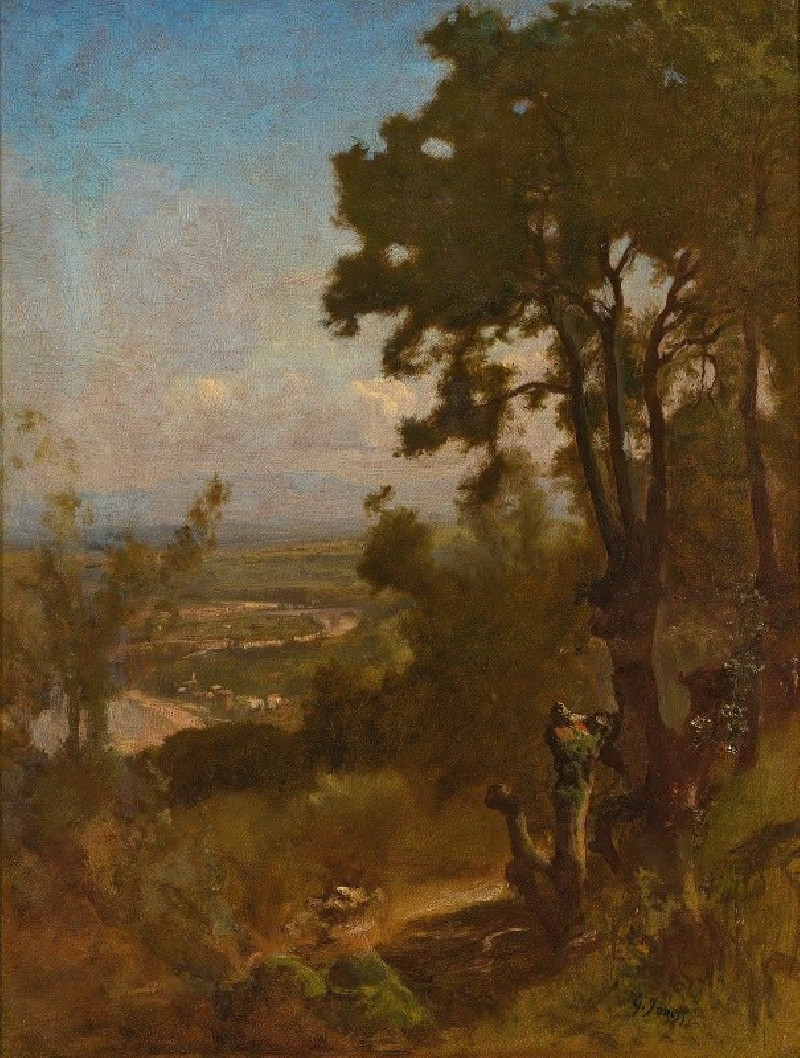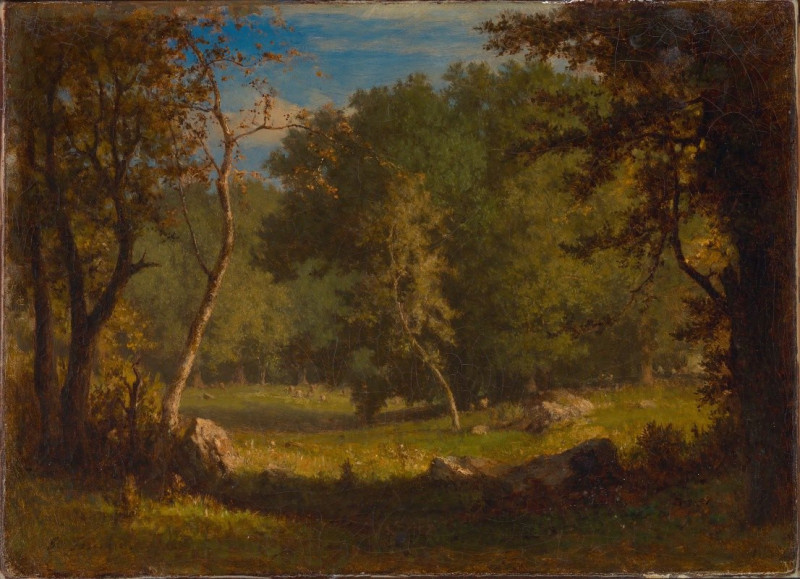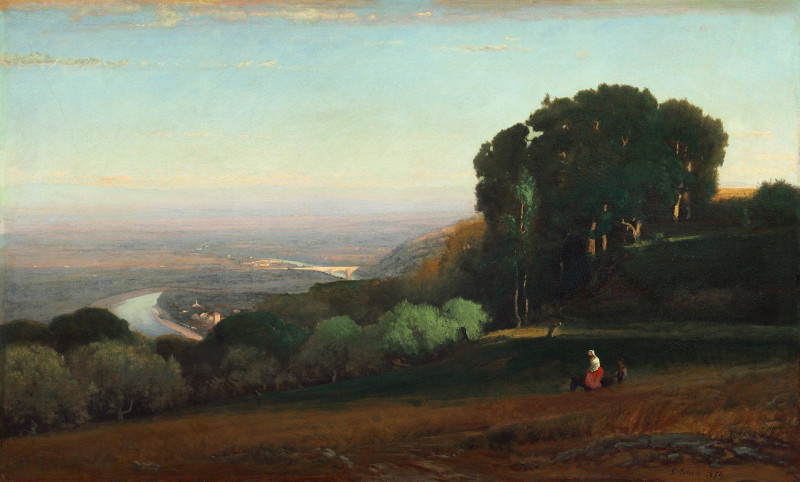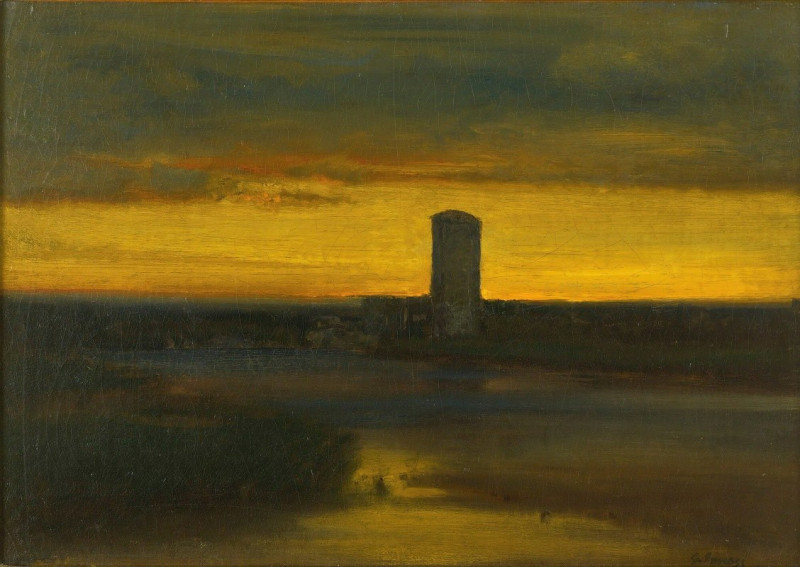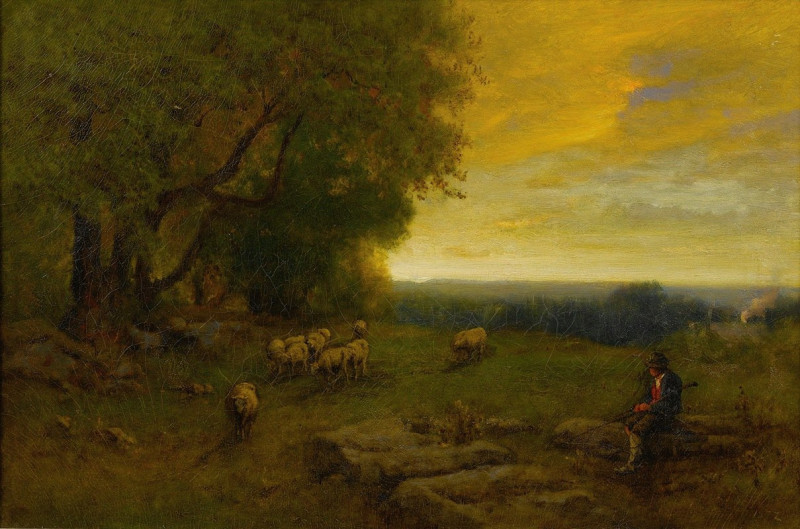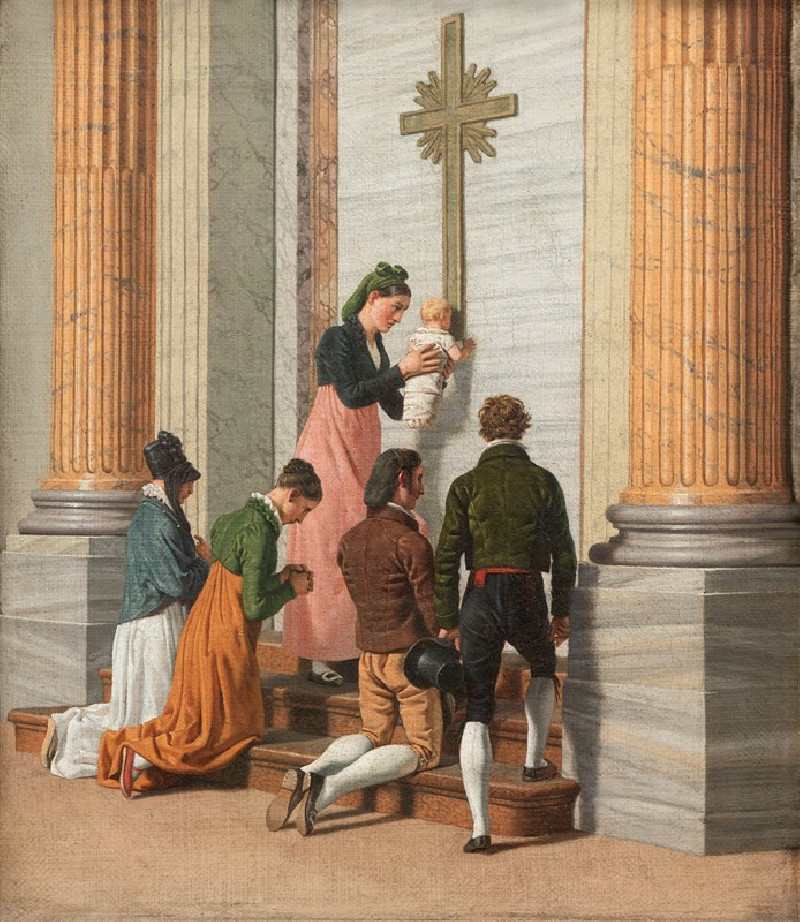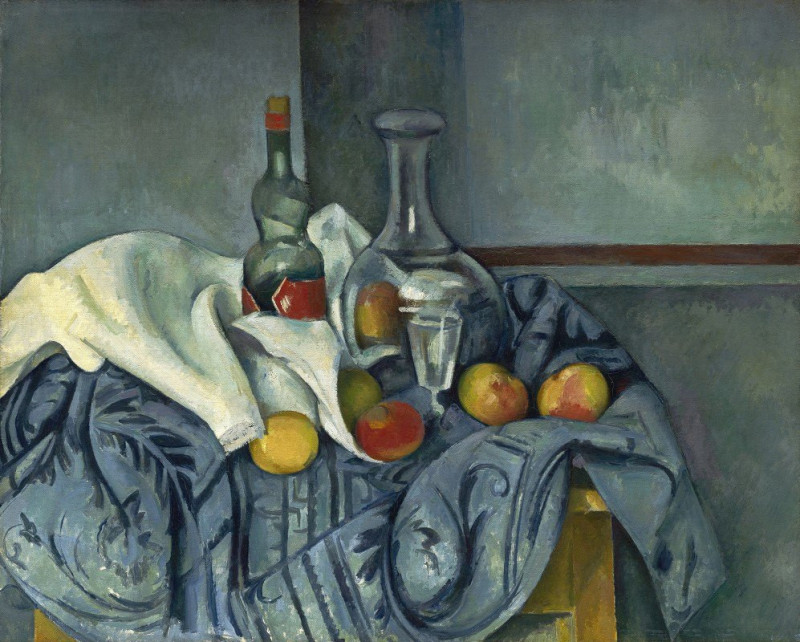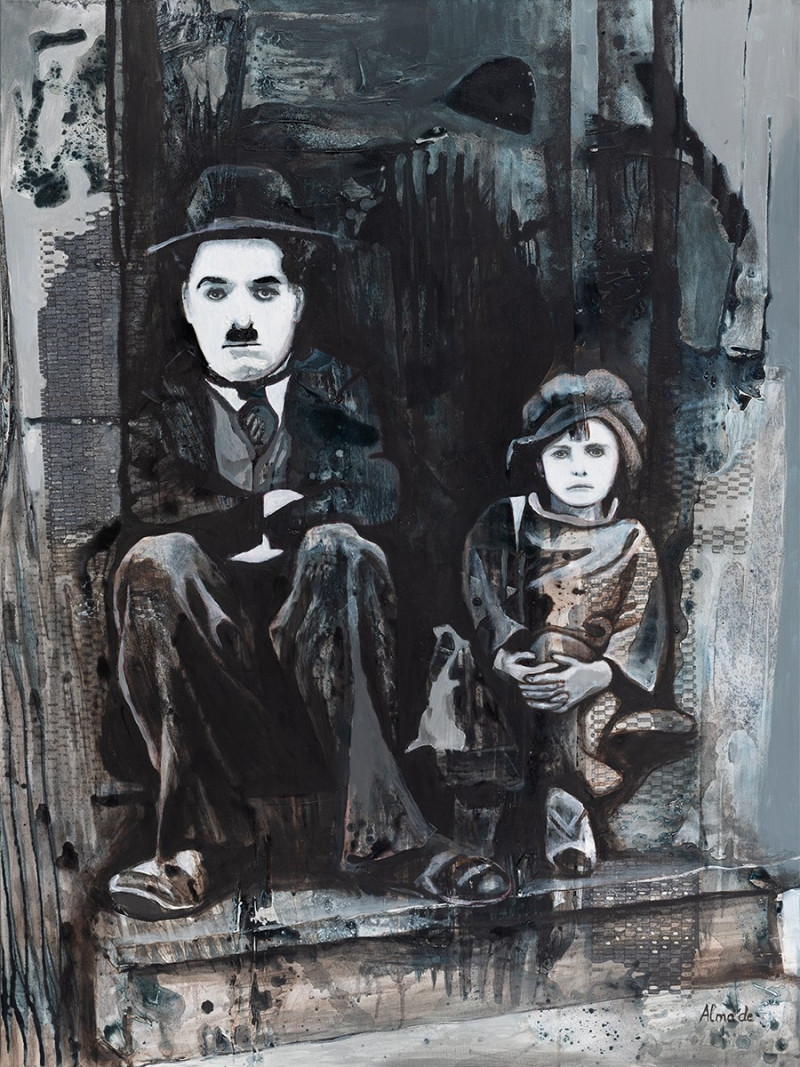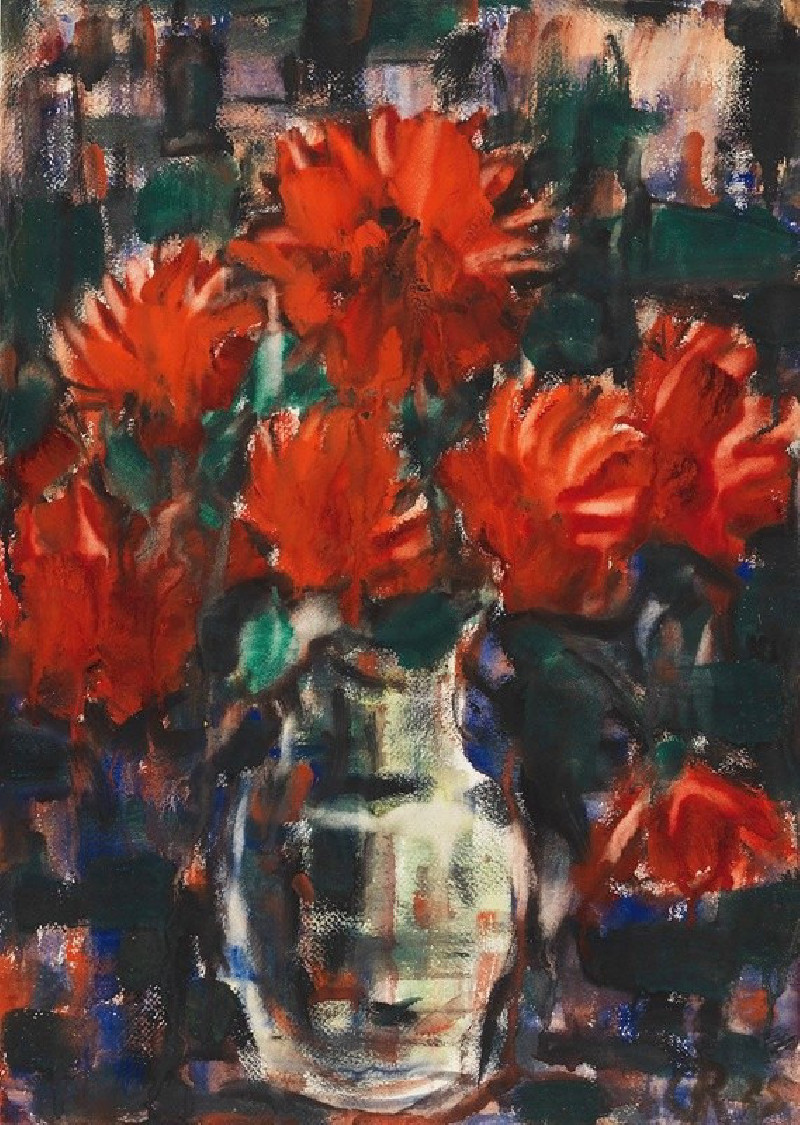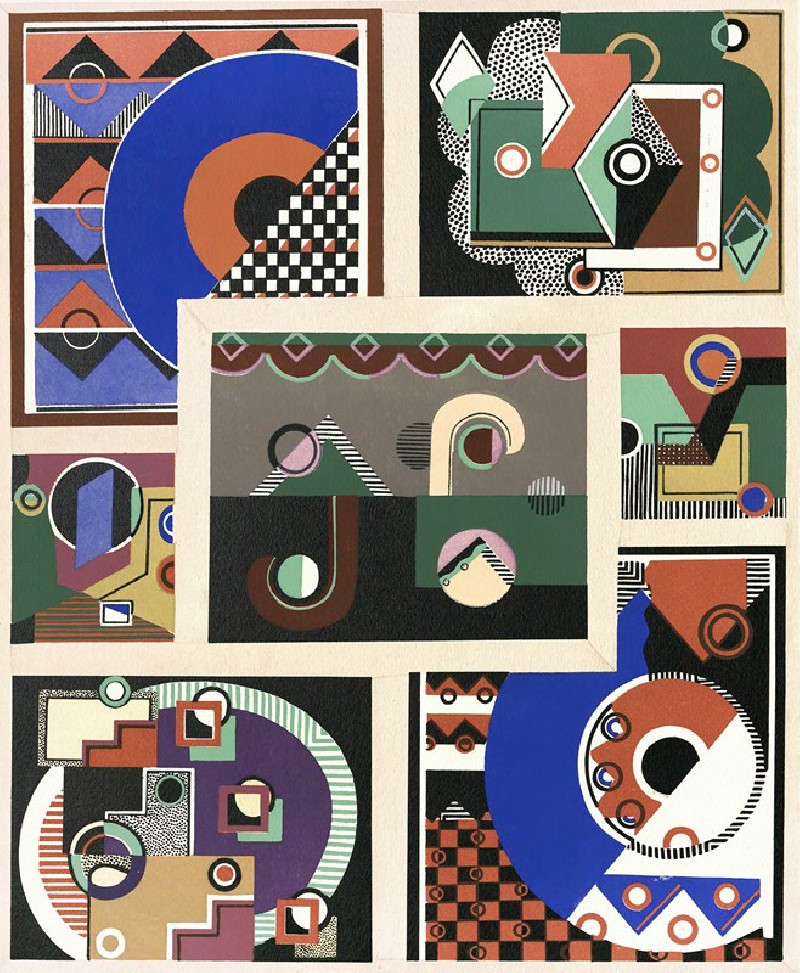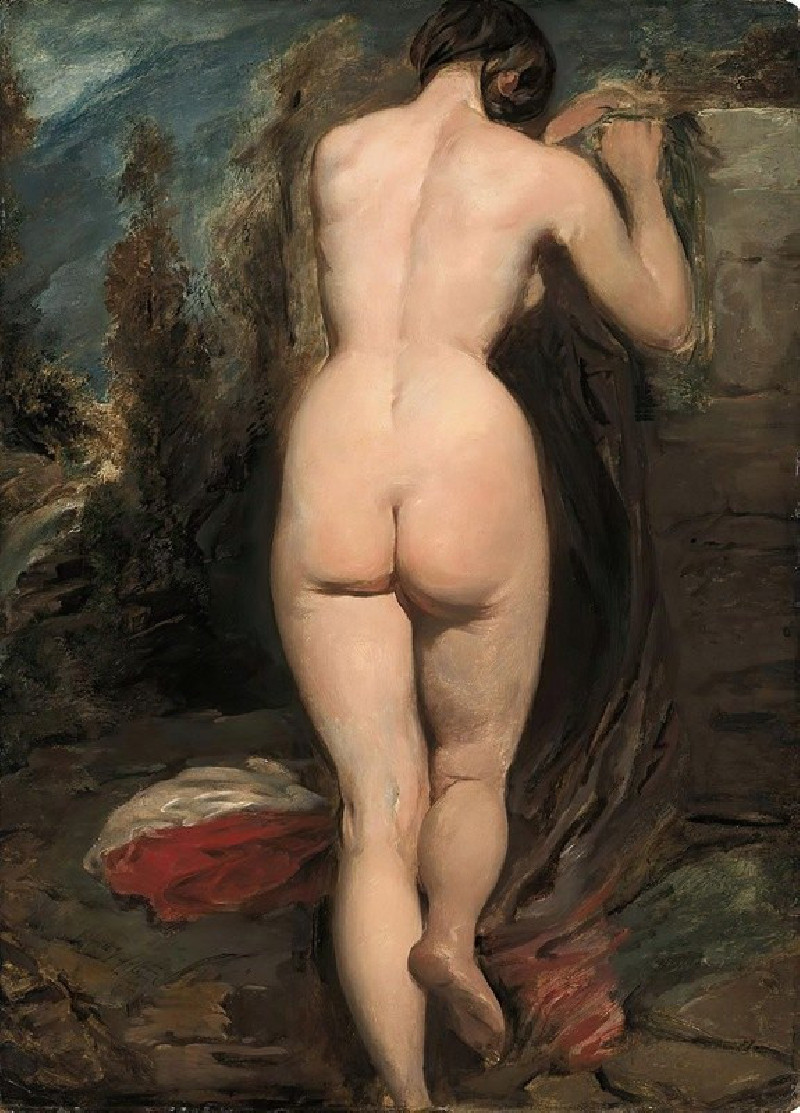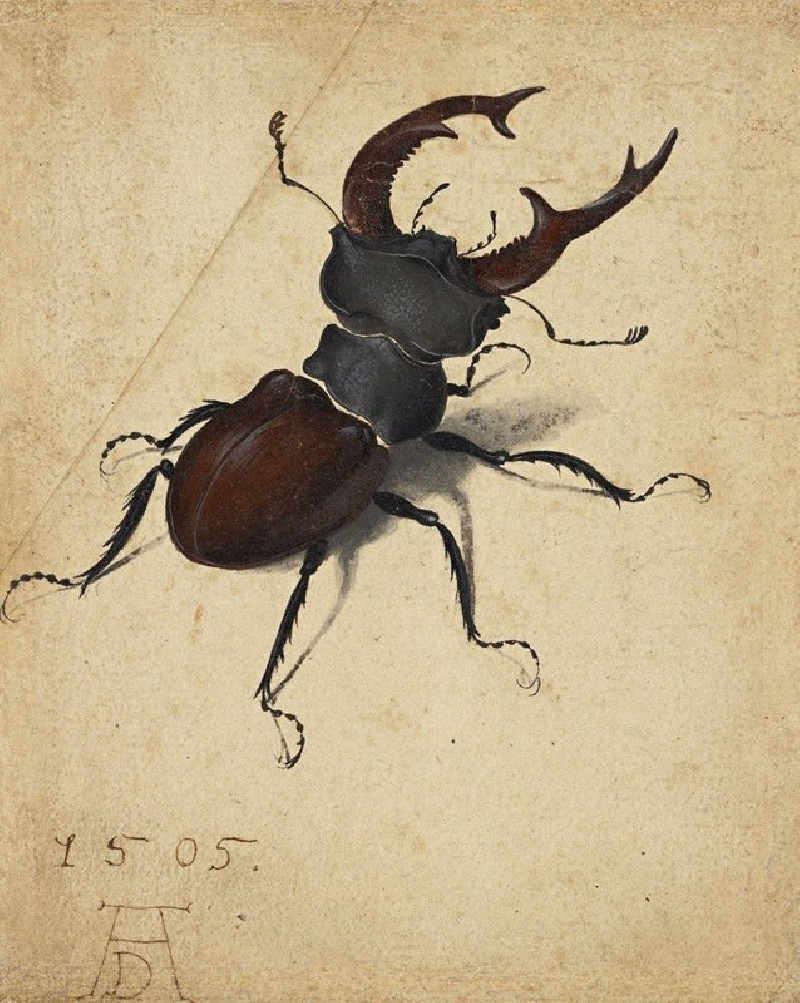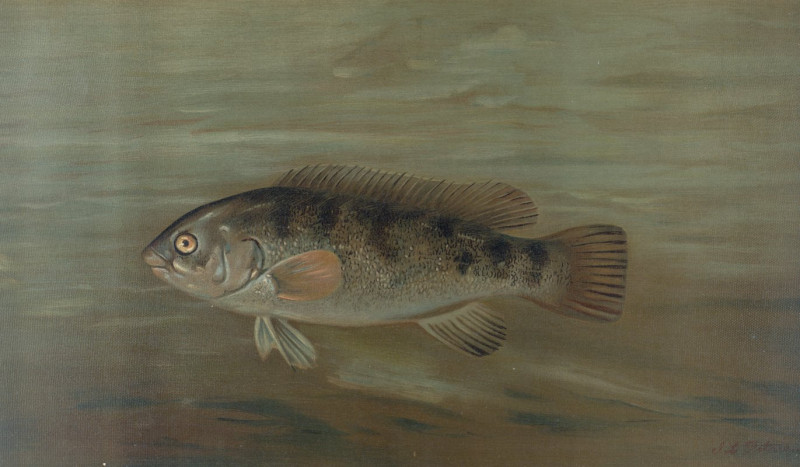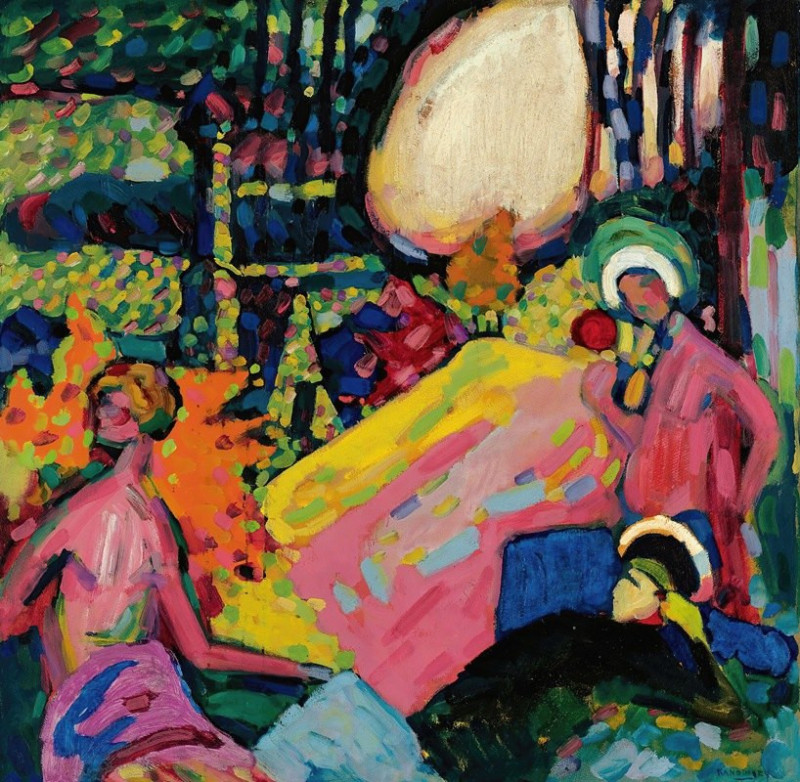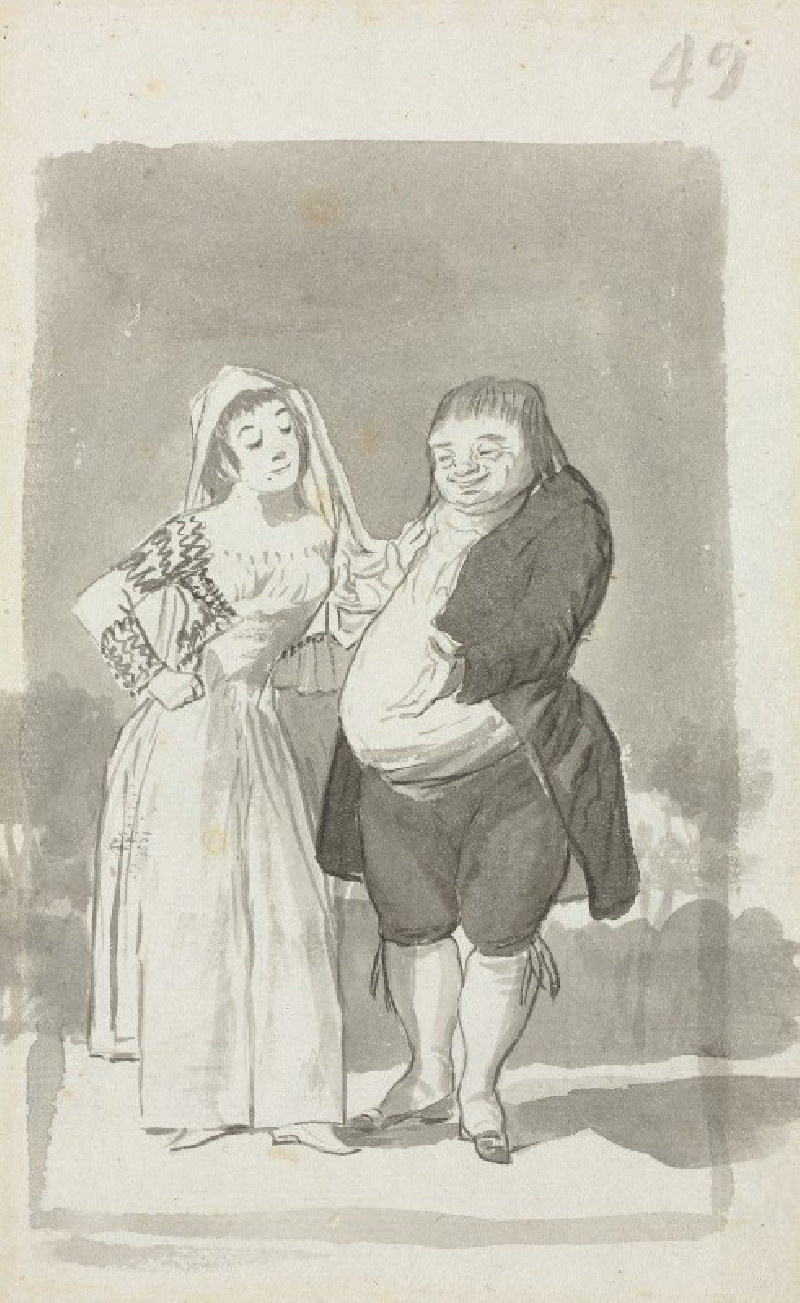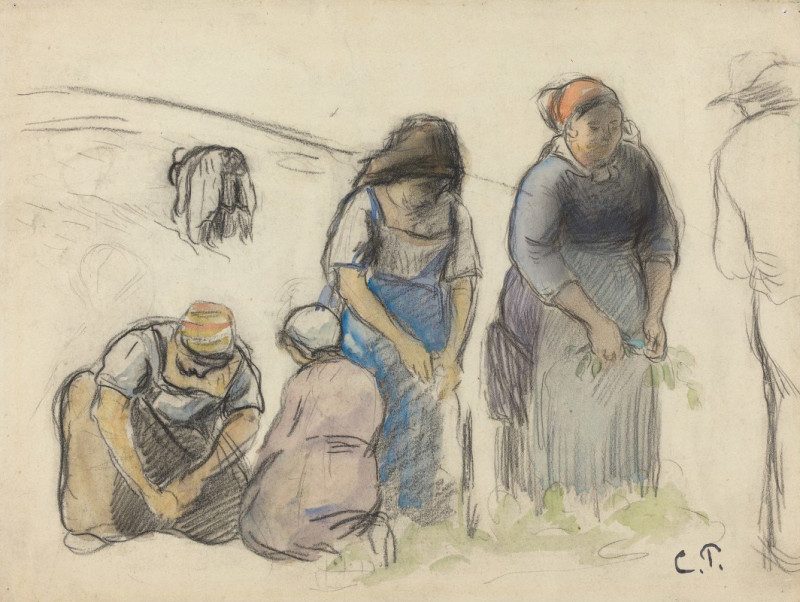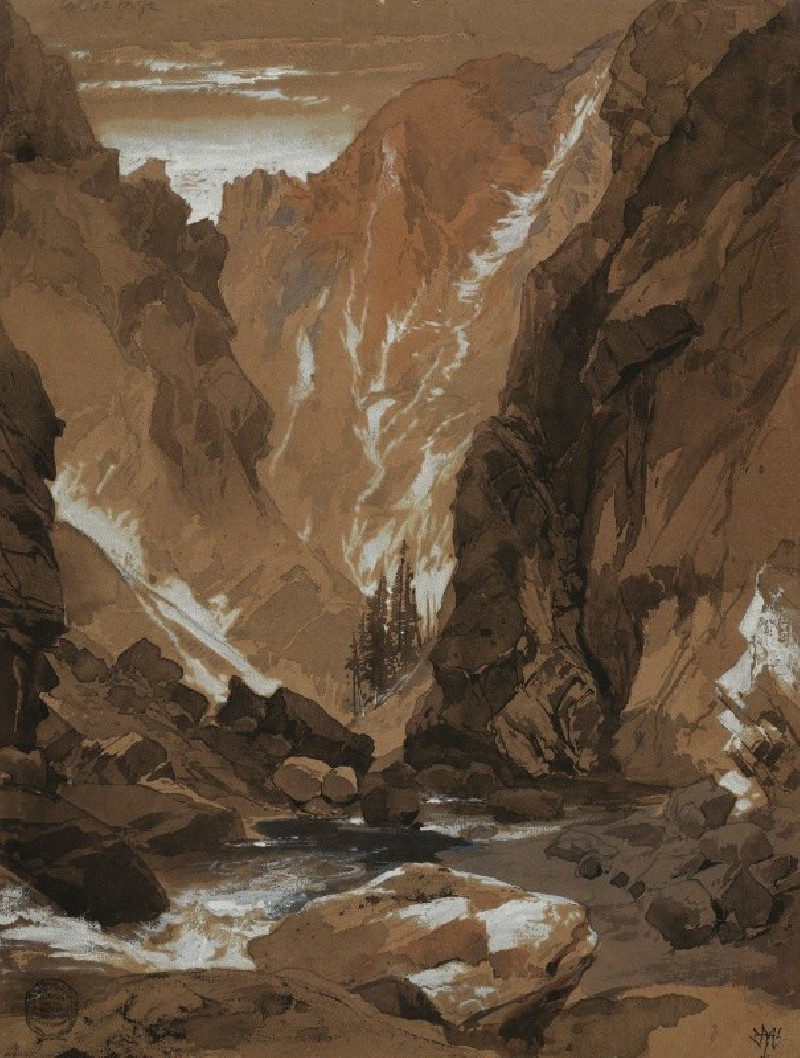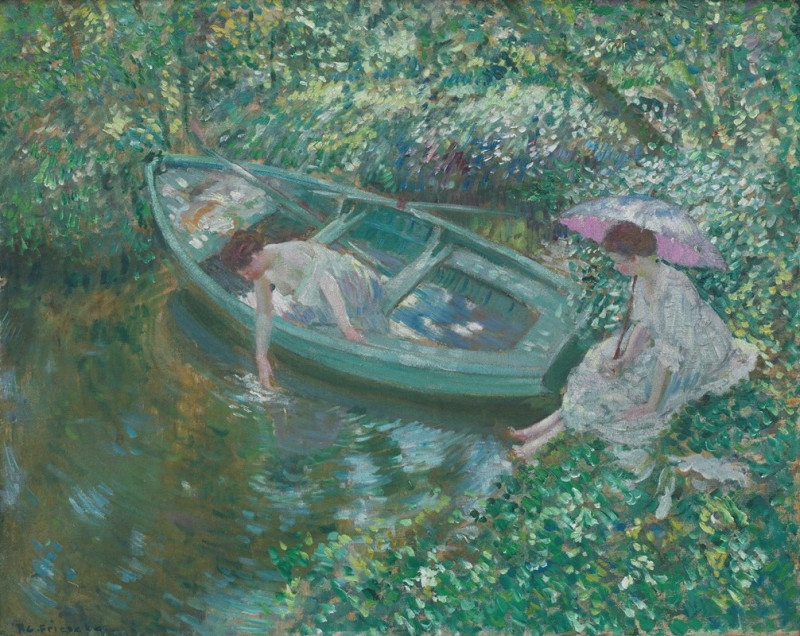Niagara Falls (1885)
Technique: Giclée quality print
Recommended by our customers
More about this artwork
George Inness’s painting "Niagara Falls," created in 1885, captures the awe-inspiring beauty and raw power of one of North America’s most famous natural wonders. This oil on canvas piece is a striking example of Inness’s mature style, which blends elements of realism with the ethereal qualities of Tonalism, a style that emphasizes atmosphere and mood over direct representation.In "Niagara Falls," Inness offers viewers a sublime representation of the cascading waters and the mist that rises from the plunging falls. The artist employs a muted palette dominated by cool tones of blue and green, interjected with the pale whites and grays of the surging spray, creating an almost dreamlike vista. The foreground, dominated by the deep, tranquil blues of the river, leads the eye to the falls themselves, depicted in vigorous strokes of white and green, conveying both the force and the majesty of the falling water.The sky, rendered in soft, diffused light, suggests a time of day where shadows merge seamlessly with light, contributing to a sense of timeless tranquility. This atmospheric effect is a hallmark of Inness's approach, aiming not just to depict a scene but to evoke an emotional response.While Inness is often celebrated for his pastoral landscapes, his interpretation of Niagara Falls stands out for its dynamic expression and the palpable sense of awe it invokes.
Delivery
Returns
George Inness (May 1, 1825 – August 3, 1894) was a prominent American landscape painter.
Now recognized as one of the most influential American artists of the nineteenth century, Inness was influenced by the Hudson River School at the start of his career. He also studied the Old Masters, and artists of the Barbizon school during later trips to Europe. There he was introduced to the theology of Emanuel Swedenborg, which was significant for him; he expressed that spiritualism in the works of his maturity (1879–1894).

